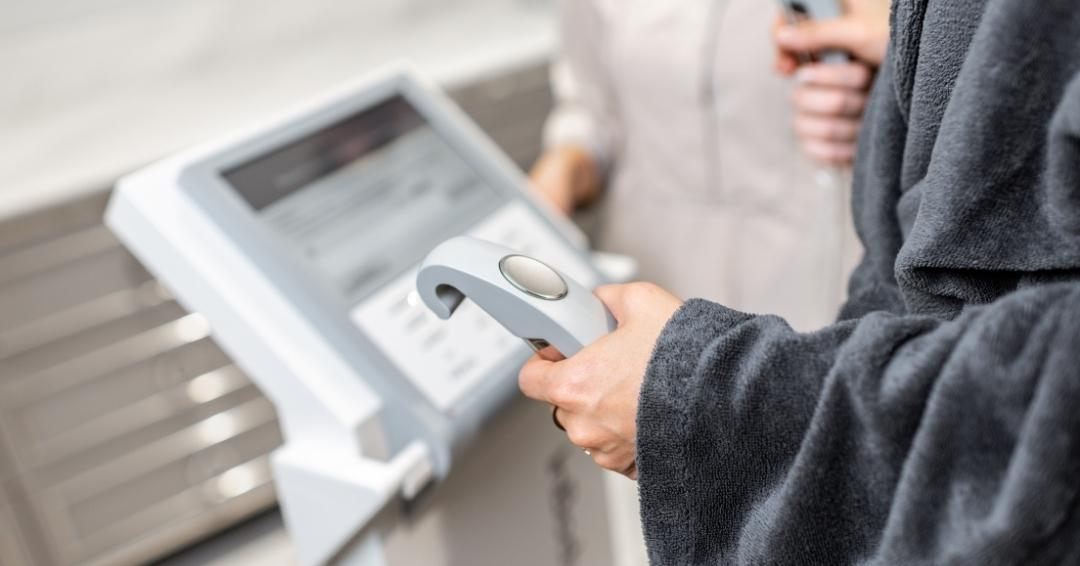
Body composition is a method of breaking down the body into its core components: fat, protein, minerals, and body water. It describes bodyweight more accurately and provides a better glimpse into your overall health compared to traditional methods. Body composition analysis can accurately show changes in fat mass, muscle mass, and body fat percentage.
Through Body Composition Analysis (BCA), you can learn how to find your body fat percentage and track fat and muscle changes over time.
Most diet and fitness goals focus on weight loss or gain, overlooking that two people of the same sex and body weight may look completely different from each other because they have different body composition. Body composition describes the body fat percentage, bone, water, and muscle in the body. Measuring your body composition will tell you your own body’s unique makeup and help you identify areas to work on to improve your overall health and wellness.
You may be aware of the healthy weight ranges, but how do you get there? If you only focus on losing weight, you may end up losing muscle mass and eventually sabotage your efforts. By differentiating between muscle and fat, body composition removes the guesswork of determining what your weight fluctuations mean, be it muscle gain, fat loss, or anything in between.
Whatever your goals, an important thing to keep in mind during your health journey is that there’s more to being healthy than looking thin.
Disclaimer: InBody devices should be used as an adjunct tool for clinical decision making and are not intended to diagnose or treat any diseases.
Studies have proved InBody DSM-BIA body composition analyzers are an effective tool for managing patients’ diabetic risks and symptoms. InBody products do not rely on empirical data, therefore, medical professionals can be certain the outputs generated by the device accurately reflect changes happening in the patient.
In less than 60 seconds, an InBody Test provides a comprehensive Result Sheet to help professionals:
A healthy body fat percentage ranges between 21% to 33% for women and 8% to 24% for men, depending on age and activity level. These ranges support normal body function and lower the risk of chronic diseases.
You can check your body fat percentage at home using skinfold calipers, a tape measure, or smart scales. The skinfold method involves pinching fat in specific body areas (like the abdomen or triceps) and measuring the thickness with calipers to estimate total body fat. While not as precise as clinical tools, it's affordable and effective when used consistently.
A body fat percentage of 20% is generally considered healthy for most individuals. It typically falls within the 'fitness' or 'average' range, indicating a balanced level of fat that supports overall health without excess.
A body fat percentage of 7% is very low and generally typical for professional athletes or bodybuilders during competition. While it may be safe short-term under supervision, sustaining it long-term may pose health risks for the average person.
Healthy body fat percentages vary by age and sex. As people age, body fat tends to increase due to changes in metabolism and muscle mass. Here are the general healthy ranges:
For Women:
For Men:
References:
https://www.healthline.com/health/how-to-measure-body-fat
https://www.allfitwell.com/body-fat-percentage-chart/
https://www.dietdoctor.com/weight-loss/body-fat-percentage
Understanding your body composition is the first step toward a healthier lifestyle. Book a Body Composition Analysis at Gleneagles Hospital Penang to get detailed insights into your fat, muscle, and water levels. Explore our Health Screening Services for a comprehensive wellness assessment that covers all aspects of your health. Take control of your health and start your journey to a healthier, more balanced lifestyle today!

Wait a minute

Wait a minute